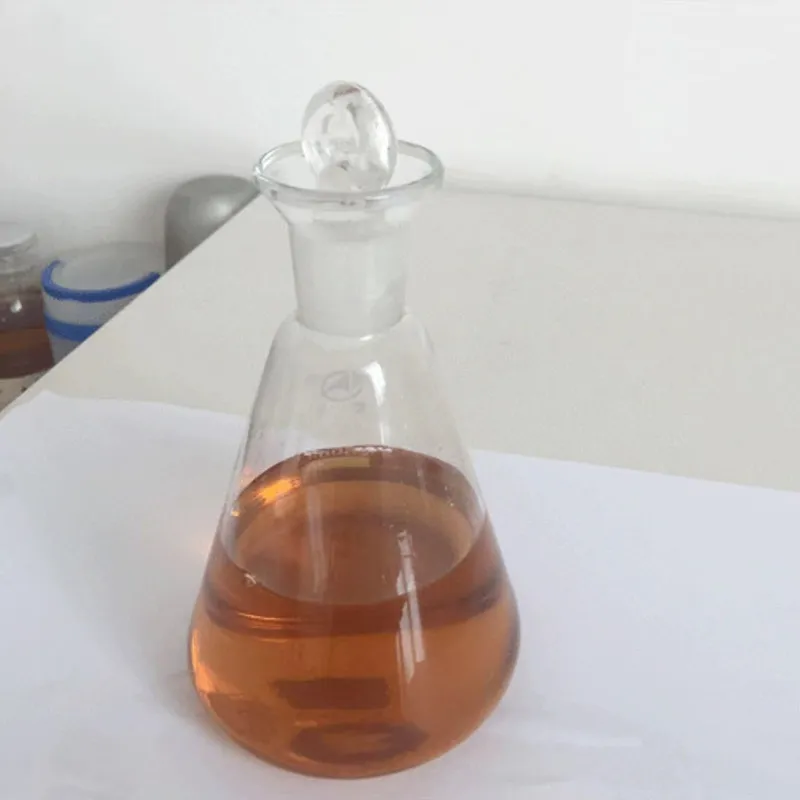
aromatic solvents
Understanding Aromatic Solvents Properties, Uses, and Safety Concerns
Aromatic solvents, derived primarily from petroleum, possess a unique structure characterized by one or more aromatic rings. These organic compounds are widely used in various industrial and laboratory applications due to their solvent properties, which enable the dissolution of a wide range of substances. In this article, we will delve into the properties, common uses, and safety concerns associated with aromatic solvents.
Properties of Aromatic Solvents
Aromatic solvents are known for their distinct chemical properties. The most prominent feature is their ability to dissolve non-polar and polar compounds, which makes them incredibly useful in many applications. Common aromatic solvents include toluene, xylene, and benzene, with each having unique characteristics
1. Benzene As the simplest aromatic solvent, benzene is a colorless, flammable liquid with a sweet odor. However, due to its known carcinogenic properties, its use has been increasingly restricted. 2. Toluene This solvent is slightly more toxic than benzene but is still widely used in industries such as paint thinners, adhesives, and nail polish removers. Toluene has a favorable balance of evaporation rate and solvency, making it an effective choice for various applications.
3. Xylene Comprising three isomers (ortho, meta, and para), xylene is commonly used in the printing, rubber, and leather industries. Its ability to dissolve a wide range of compounds makes it indispensable for paint and varnish formulations.
These solvents are characterized by relatively high boiling points and specific gravities, providing them with excellent solvent capabilities. Understanding these properties is crucial for selecting the right solvent for a specific application.
Applications of Aromatic Solvents
The industrial usage of aromatic solvents is extensive. Below are some key applications
1. Paints and Coatings Aromatic solvents such as toluene and xylene are essential in the formulation of paints, varnishes, and coatings. They help dissolve pigments and resins, ensuring even distribution and application.
2. Adhesives Many adhesive products rely on aromatic solvents for their formulation. The solvents facilitate quick drying and provide strong bonding properties.
aromatic solvents

3. Chemical Synthesis In laboratories, aromatic solvents are often used as reaction mediums in organic synthesis. Their capacity to dissolve a variety of reagents makes them valuable for conducting chemical reactions.
4. Extraction Processes Aromatic solvents can effectively extract essential oils and other organic compounds from plant materials. This property is important in the flavor and fragrance industries.
5. Cleaning Agents Due to their solvent properties, aromatic compounds are used in cleaning and degreasing applications, particularly in metal cleaning prior to coating.
Safety Concerns
Despite their utility, aromatic solvents pose significant health and environmental risks. Long-term exposure to these compounds can lead to serious health issues, including neurological damage, liver and kidney damage, and an increased risk of cancer. It’s crucial to implement safety measures when working with these solvents
1. Ventilation Ensure that workspaces are well-ventilated to minimize inhalation risks. Use fume hoods in laboratory settings to control exposure.
2. Personal Protective Equipment (PPE) Utilize appropriate PPE such as gloves, goggles, and respiratory protection to limit skin and inhalation exposure.
3. Storage and Disposal Store aromatic solvents in approved containers and label them correctly to avoid mishandling. Dispose of waste according to local hazardous waste regulations to prevent environmental contamination.
4. Education and Training Ensure that all personnel working with aromatic solvents receive adequate training on safe handling practices, the potential hazards of these chemicals, and emergency response procedures.
Conclusion
Aromatic solvents play a crucial role in various industries, offering effective solutions for numerous applications. However, their associated health risks necessitate a thorough understanding of safety measures to protect workers and the environment. As industries continue to innovate and evolve, the challenge remains to harness the benefits of aromatic solvents while mitigating their risks. Responsible use and adherence to safety protocols will ensure that these valuable materials can be utilized safely and efficiently.
-
Buy High-Quality Trichloroisocyanuric Acid for Sale | TCCA 90% SupplierNewsAug.30,2025
-
Pure Sodium Dichloroisocyanurate Dihydrate | Powerful DisinfectantNewsAug.29,2025
-
Industrial Chemicals: Quality & Purity for Every IndustryNewsAug.28,2025
-
Nitrile Rubber Honoring Strict Production StandardsNewsAug.22,2025
-
Aspartame Ingredients Honoring Food Safety ValuesNewsAug.22,2025
-
Fertilizer for Balanced Plant NutritionNewsAug.22,2025
-
Cyanide Gold Processing with High Purity AdditivesNewsAug.22,2025
Hebei Tenger Chemical Technology Co., Ltd. focuses on the chemical industry and is committed to the export service of chemical raw materials.
-

view more DiethanolisopropanolamineIn the ever-growing field of chemical solutions, diethanolisopropanolamine (DEIPA) stands out as a versatile and important compound. Due to its unique chemical structure and properties, DEIPA is of interest to various industries including construction, personal care, and agriculture. -

view more TriisopropanolamineTriisopropanolamine (TIPA) alkanol amine substance, is a kind of alcohol amine compound with amino and alcohol hydroxyl, and because of its molecules contains both amino and hydroxyl. -

view more Tetramethyl Thiuram DisulfideTetramethyl thiuram disulfide, also known as TMTD, is a white to light-yellow powder with a distinct sulfur-like odor. It is soluble in organic solvents such as benzene, acetone, and ethyl acetate, making it highly versatile for use in different formulations. TMTD is known for its excellent vulcanization acceleration properties, which makes it a key ingredient in the production of rubber products. Additionally, it acts as an effective fungicide and bactericide, making it valuable in agricultural applications. Its high purity and stability ensure consistent performance, making it a preferred choice for manufacturers across various industries.





